Pupa is the life stage of an insect that goes through a complete metamorphosis. Pupae is the plural form of the word.
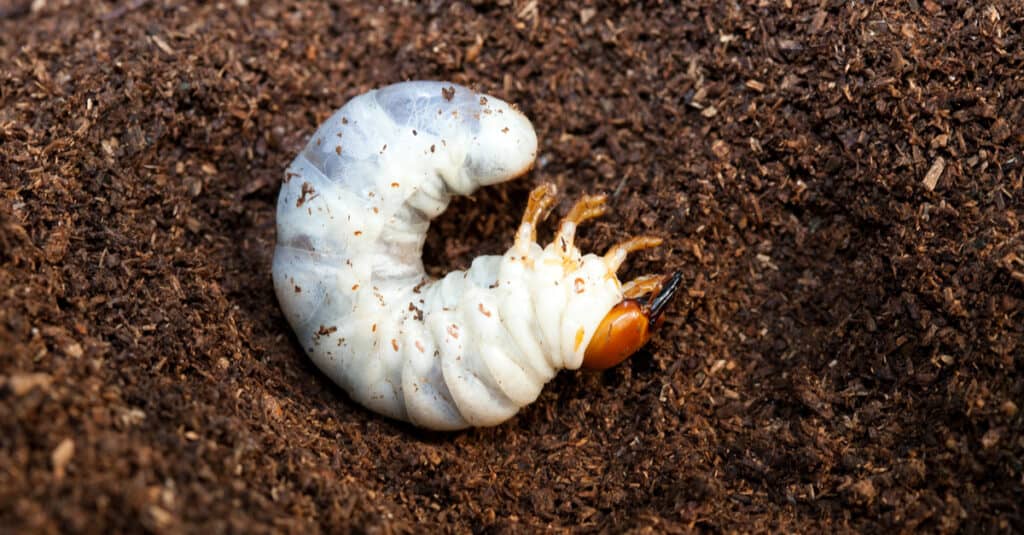
Pupa is the life stage of an insect that goes through a complete metamorphosis.
©JUN3/Shutterstock.com
Summary
Only insects that undergo a complete metamorphosis have a pupa stage. The pupa stage occurs between the larva and adult stage, in which the developing insect is enclosed inside a protective case called a cocoon or chrysalis. The insect undergoes extreme transformations during the pupa stage until it emerges as an adult.
The insects’ hormones control the process of entering and completing the pupa stage. During the pupa stage, the insect does not eat. Although the organism may seem inactive on the outside, the insect is undergoing a complete metamorphosis inside the pupa. When the adult appears from the protective shell, it is called an emergence.
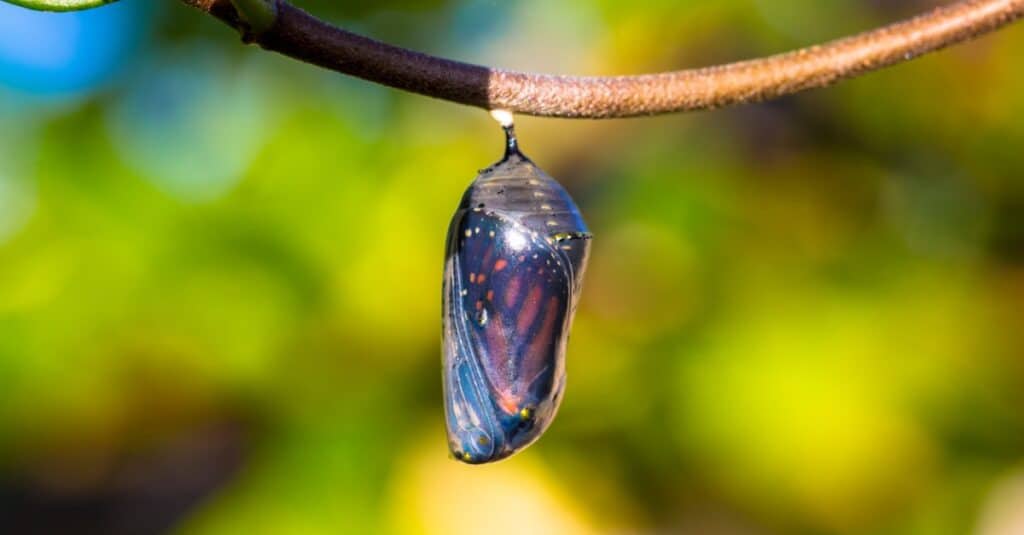
The insect undergoes extreme transformations during the pupa stage until it emerges as an adult.
©iStock.com/Daynjer-In-Focus
How to Pronounce
Pupa is pronounced [pyoo·puh]
How Metamorphosis Works
Insects that undergo a complete metamorphosis go through a four-stage life cycle which includes:
- Egg
- Larva
- Pupa
- Adult
The pupa stage is when the larva undergoes internal changes to transform into the adult form of the insect. During these considerable changes, although the insect is vulnerable, it is protected by its hard case or shell.
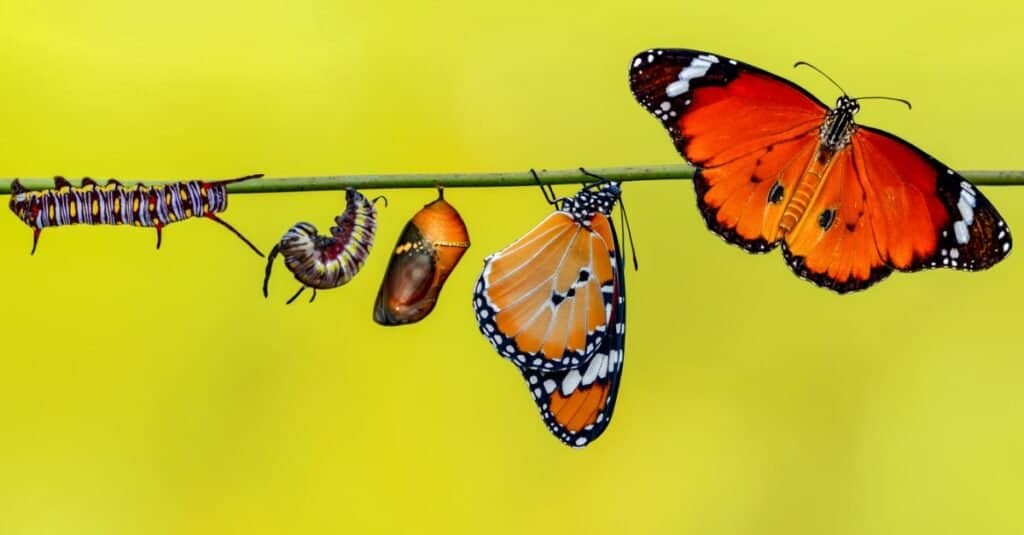
Insects that undergo a complete metamorphosis go through a four-stage life cycle.
©iStock.com/Darkdiamond67
The Five Types of Insect Pupae
Scientists use five terms to describe the forms of the pupa stage. However, an insect pupa can be described as more than one form. Pupae can be exarate and adecticous, for example, such as in fleas.
These five types include:
- Exarate pupa occurs when the insects’ appendages (legs and proboscis) are free and visible. They can move, although they usually do not. Examples include ants, bees, sawflies, and wasps. A cocoon is exarate.
- Obtect is opposite of exarate. In this type, the pupa is a compact, hard shell with the appendages tightly packed within and fused to the body as the exoskeleton hardens. Examples include mosquitoes, midges, crane flies, most butterflies, and a few ants, bees, beetles, and wasps. A butterfly’s chrysalis is obtect.
- A coarctate pupa has visible appendages covered by the shell. The shell is the last larval skin of the insect. Examples include the housefly and fruit fly.
- Decticous is when an exarate pupa has movable mandibles attached to its head. The insects in a decticous pupa life stage may use their mandibles to chew through the pupal cell. Examples include caddisflies, scorpionflies, and hanging flies.
- In the adecticous pupa, the insect’s mandibles do not move. The insect cannot chew its way out of its case. These pupae may be exarate or obtect. Some examples include fleas and twisted-wing parasites (Strepsiptera).
Butterfly Chrysalis
When a butterfly transforms from a caterpillar into its adult form during its pupa stage, it creates a hard, solid, hanging case called a chrysalis. A chrysalis consists of rigid exoskeleton material which hangs suspended from twigs, leaves, or other structures only by silken threads.
One example is the monarch caterpillar that builds its chrysalis on the milkweed plant (the monarch’s primary food source). A monarch butterfly’s chrysalis starts as a beautiful seafoam green and shiny object with tiny spots along its edge. It slowly turns transparent as the caterpillar transforms into a butterfly inside the casing.
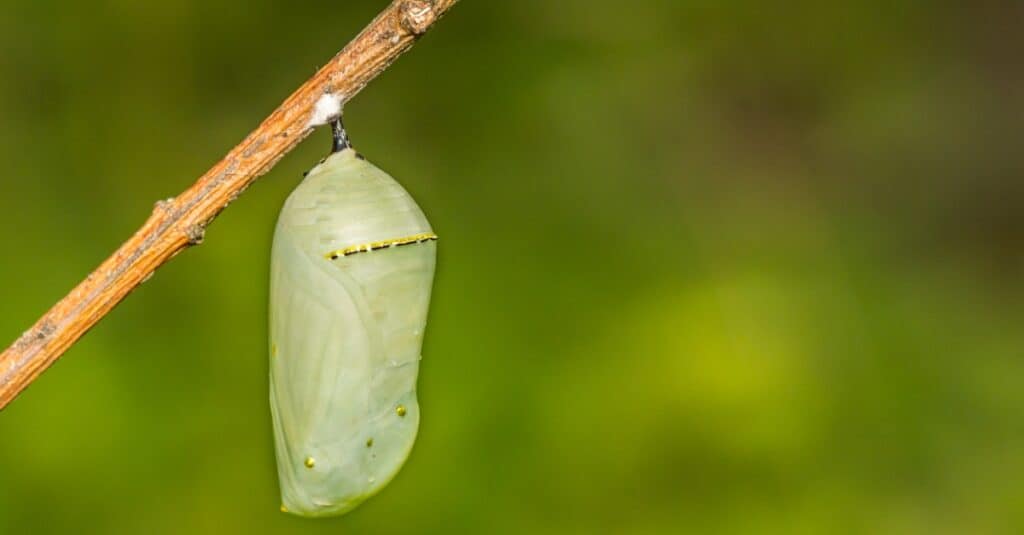
A monarch butterfly’s chrysalis starts as a beautiful seafoam green and shiny object with tiny spots along its edge.
©iStock.com/JasonOndreicka
Moth Cocoons
Moth caterpillars spin cocoons rather than build chrysalids. The cocoons that moths make differ from the butterfly chrysalis in that they are spun of silk, rather than a hard exoskeleton. The silk from some moth cocoons can be useful to humans, such as silk from the mulberry silkworm, which is used to make silk textiles.
Cocoons are more porous than chrysalids and not as rigid. They may be tough, soft, opaque, or see-through. Insects often spin their cocoons in hidden places, such as the underside of a leaf or near the base of a tree. Others may attempt to disguise the cocoon by adding small twigs or leaves to the outside of the cocoon.
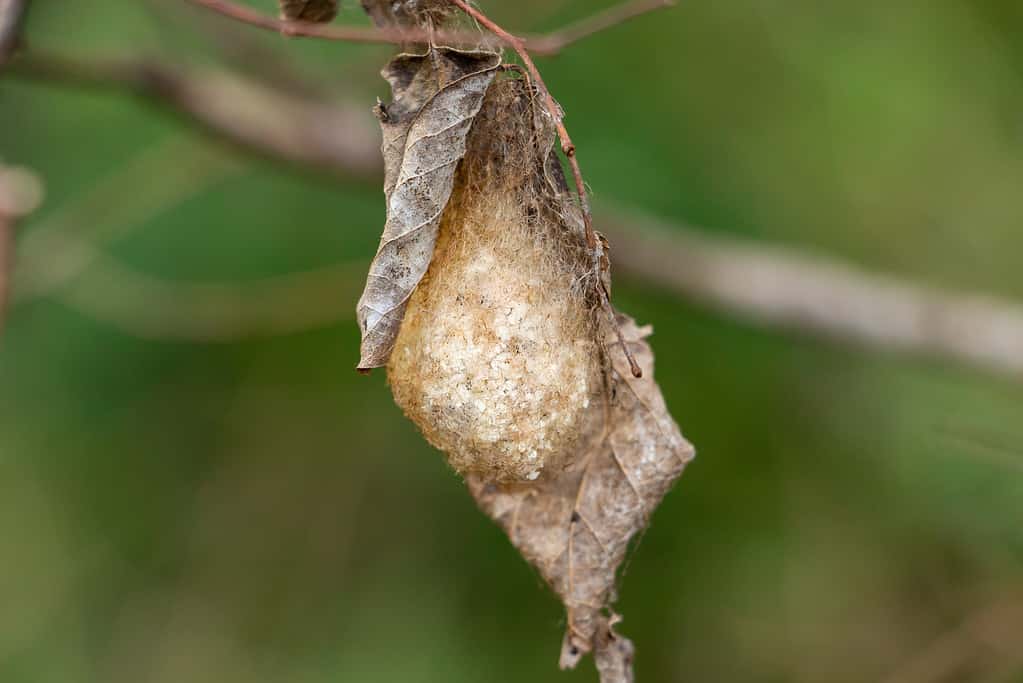
Cocoons are more porous than chrysalids and not as rigid.
©Sunshower Shots/Shutterstock.com
Bee and Wasp Cocoons
These insects also build cocoons. Bees spin their cocoons inside the honeycomb cells that they live in, while some wasps will use grass materials to construct their cocoons.
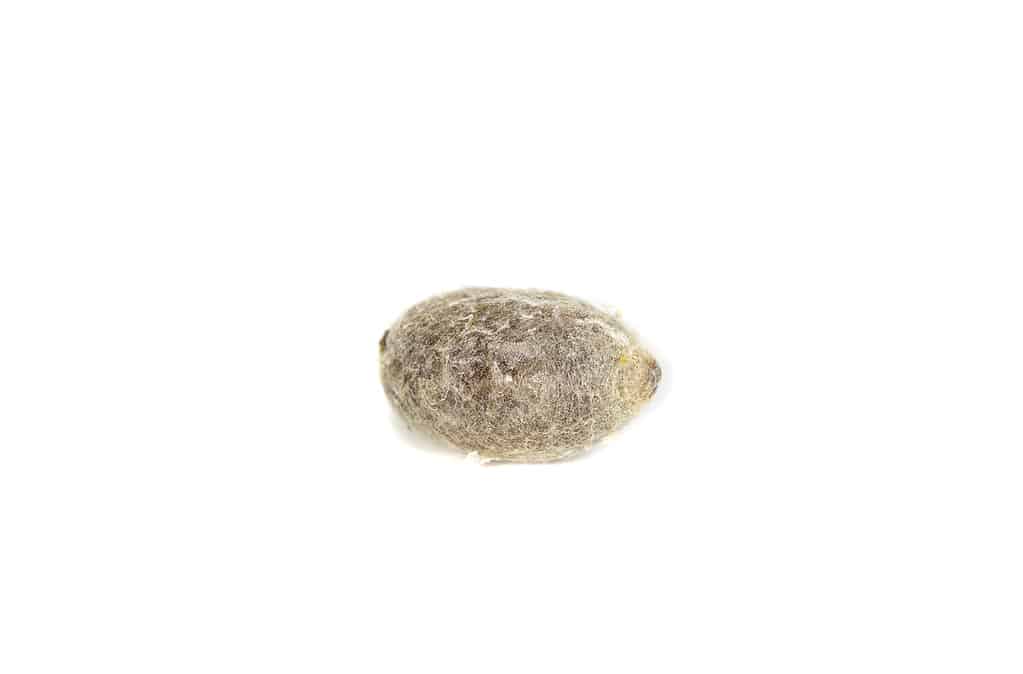
Bees spin their cocoons inside the honeycomb cells that they live in.
©David Schliepp/Shutterstock.com
Other Insects That Build Cocoons
Many other insects build cocoons, including fleas, parasitic wasps, ants, and caddisflies. For example, flea cocoons are tiny, oval-shaped, and look like a lint ball or a bit of dirt. They can be tricky to spot when the flea has built its cocoon deep in the depths of a carpet.
Fun Fact: Worker ants will protect ant cocoons from predators until they hatch as adults and become workers. However, sometimes ants will not only guard the pupa of their own young but also that of another species. Ants have been known to defend the pupa of the Common Imperial Blue Butterfly (Jalmenus evagoras). In return, the ants receive nectar secreted from the butterfly’s pupa.



